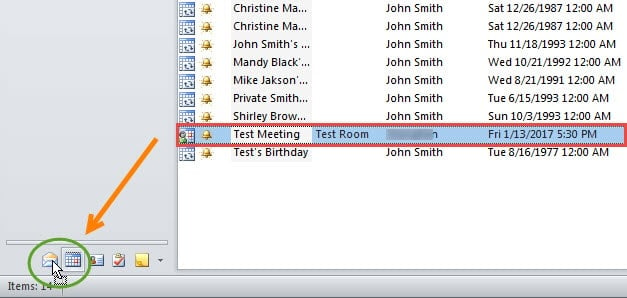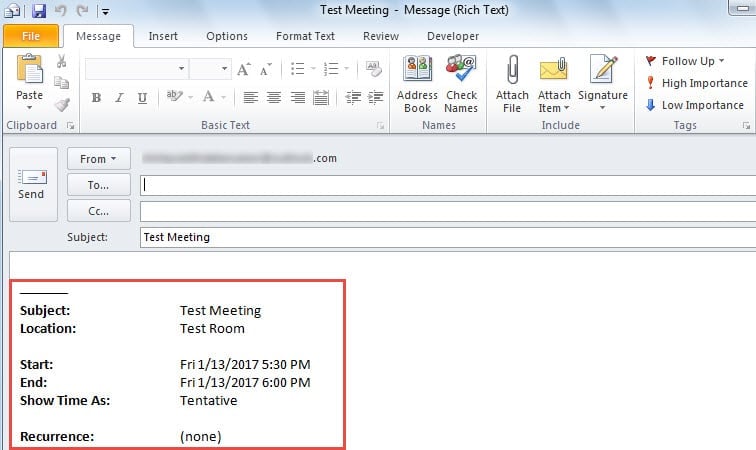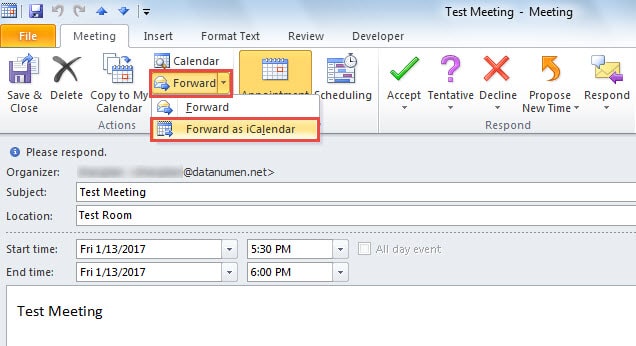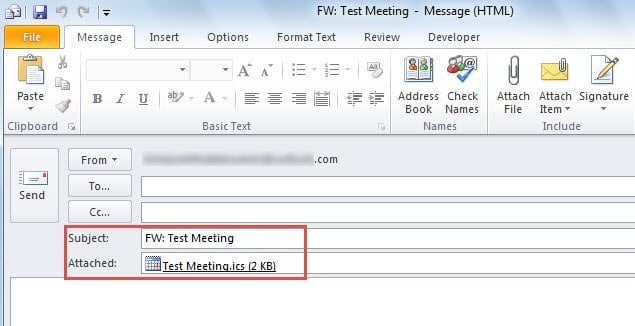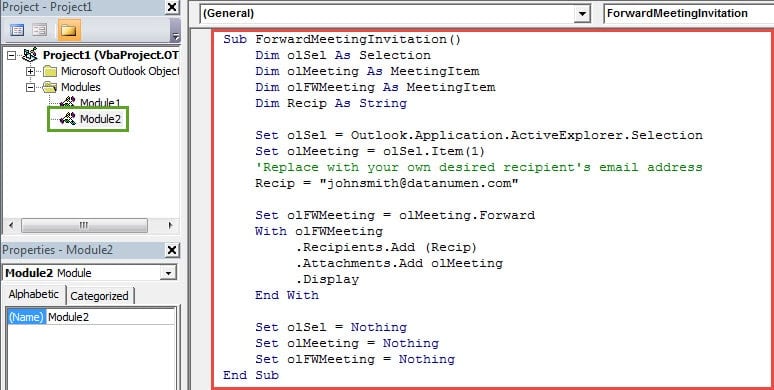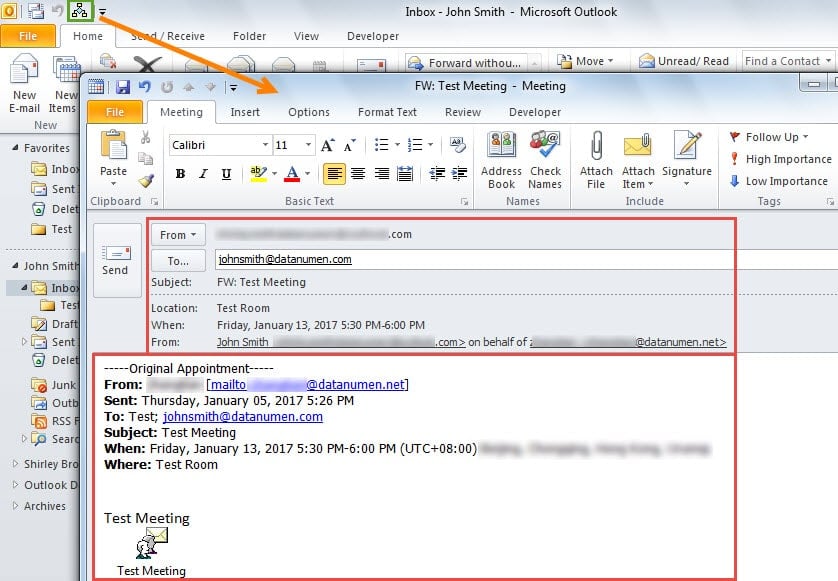By default, when you forward a meeting invitation, Outlook will automatically send a notification mail to the meeting organizer. If you dislike this, you can follow the 3 simple tricks introduced in this article.
As usual, when you intend to forward a received meeting invitation by clicking on “Forward” button on “Home” tab of Mail section, you will receive a reminder that a meeting forward notification will be sent to the meeting organizer. It looks like the following image:
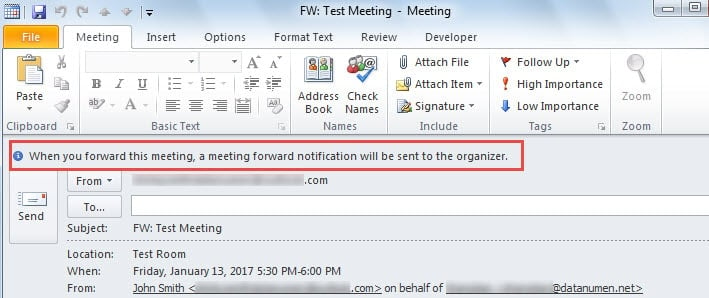
Then the organizer will get a meeting forward notification, like the picture below:
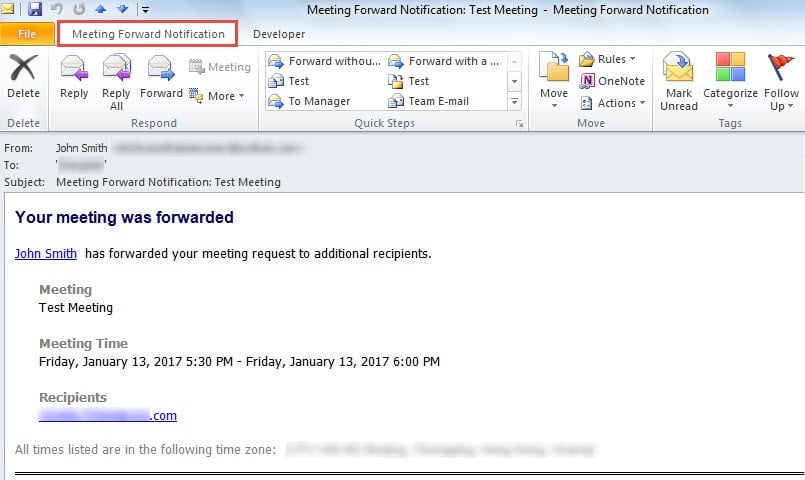
Many users would like to forward a meeting without notifying the organizer, just secretly. To achieve it, here are 3 easy tricks available.
Method 1: Drag & Drop the Meeting from Calendar to Mail
- At first, switch to “Calendar” section and find the source meeting in correct calendar folder.
- Then drag and drop it to the Mail icon at the bottom of navigation pane.
- At once, a new message will open. The meeting details have been inserted in the message body, like the image below:
However, to be honest, this method is only a workaround in that it simply creates a new message which contains the meeting details.
Method 2: Forward the Meeting as iCalendar
- For a start, you should find and double click the meeting to open it
- Then in its own window, you can click “Forward” button in “Actions” group and select “Forward as iCalendar” from the drop down list.
- Subsequently, a new message will be created, in which the meeting is added as an attachment.
Equal to the Tip 1, this approach is also a workaround, not directly forwarding a meeting invitation. If you want to indeed forward an invitation, you have to apply the last tip below.
Method 3: Forward the Meeting Invitation with Outlook VBA
- At the outset, press “Alt + F11” to open “Visual Basic” window.
- Then create a new module by clicking “Insert” > “Module”.
- Next copy and paste the following VBA codes into the new module.
Sub ForwardMeetingInvitation()
Dim olSel As Selection
Dim olMeeting As MeetingItem
Dim olFWMeeting As MeetingItem
Dim Recip As String
Set olSel = Outlook.Application.ActiveExplorer.Selection
Set olMeeting = olSel.Item(1)
'Replace with your own desired recipient's email address
Recip = "johnsmith@datanumen.com"
Set olFWMeeting = olMeeting.Forward
With olFWMeeting
.Recipients.Add (Recip)
.Attachments.Add olMeeting
.Display
End With
Set olSel = Nothing
Set olMeeting = Nothing
Set olFWMeeting = Nothing
End Sub
- After that, exit the “Visual Basic” window and add the macro to Quick Access Toolbar as usual.
- Eventually, you can have a try.
- Locate and pitch on the meeting invitation in the mail list.
- Then press the new button in the Quick Access Toolbar.
- Lastly, a new meeting invitation will open, in which the original meeting details and meeting item are in the body. Also, there is no the reminder that Outlook will send a meeting forward notification to the organizer.
Get Rid of Virus Infection to Your Outlook
It is recommended to change the macro settings of your Outlook to only permit the digitally signed macros. It can block those malicious macros, which can infect your Outlook data. If unfortunately, your Outlook data is corrupted due to viruses, you have to resort to a corrupt Outlook recovery utility, like DataNumen Outlook Repair.
Author Introduction:
Shirley Zhang is a data recovery expert in DataNumen, Inc., which is the world leader in data recovery technologies, including repair SQL mdf db corruption and outlook repair software products. For more information visit www.datanumen.com
